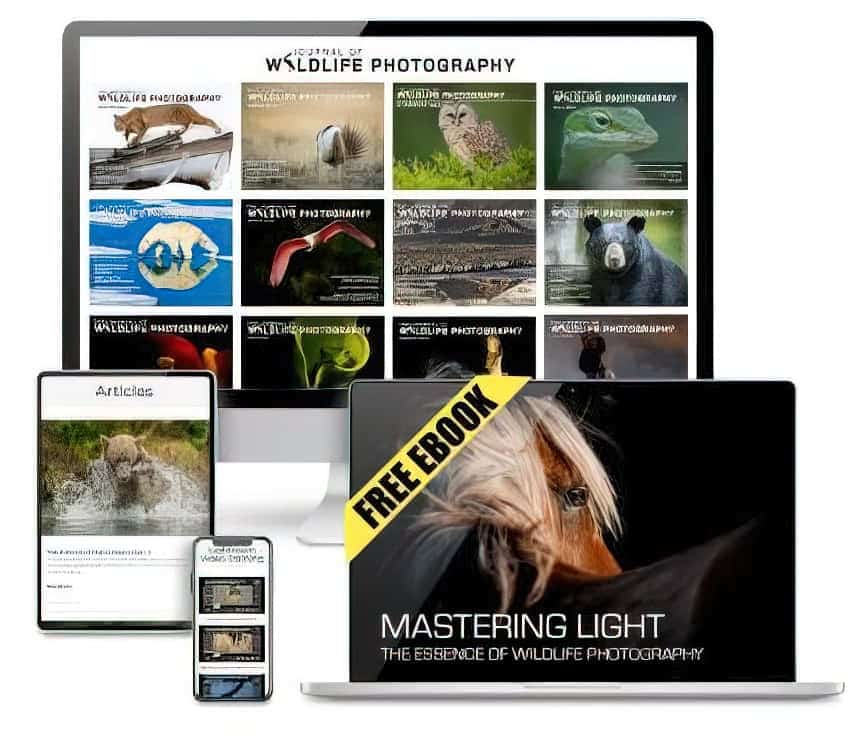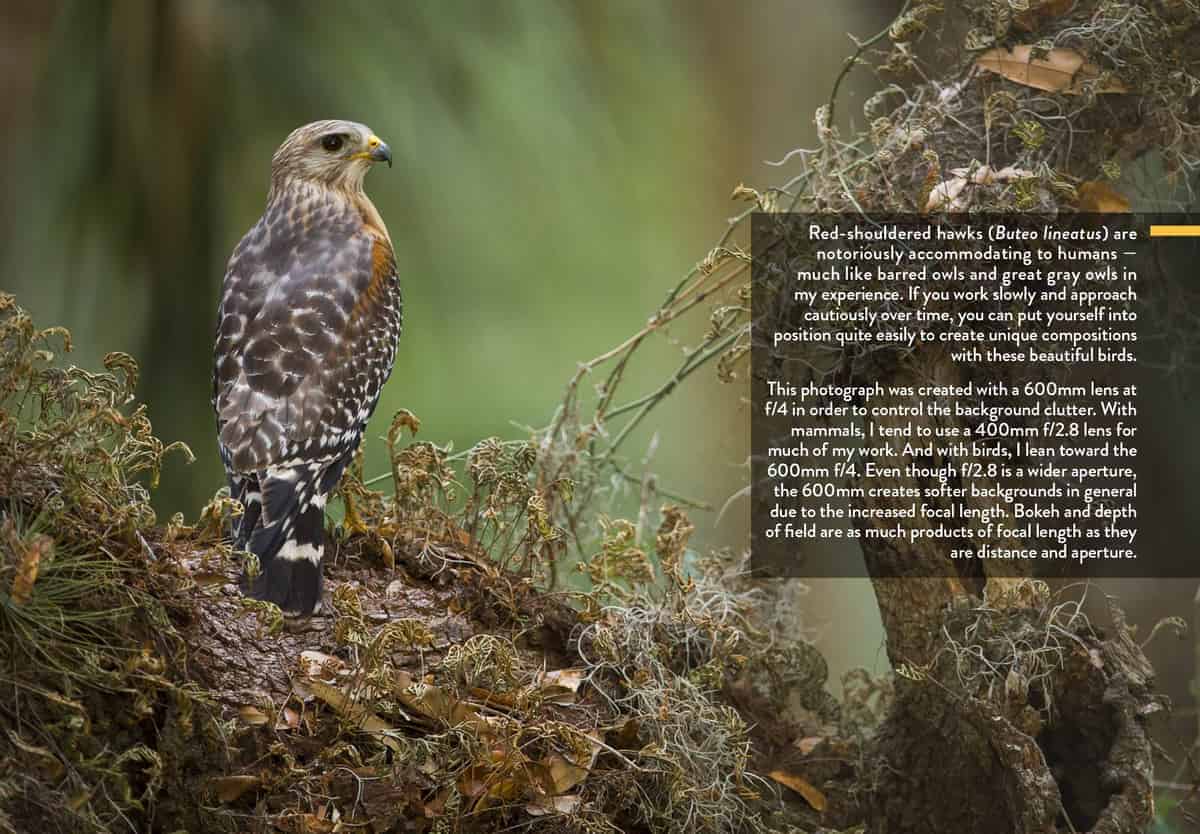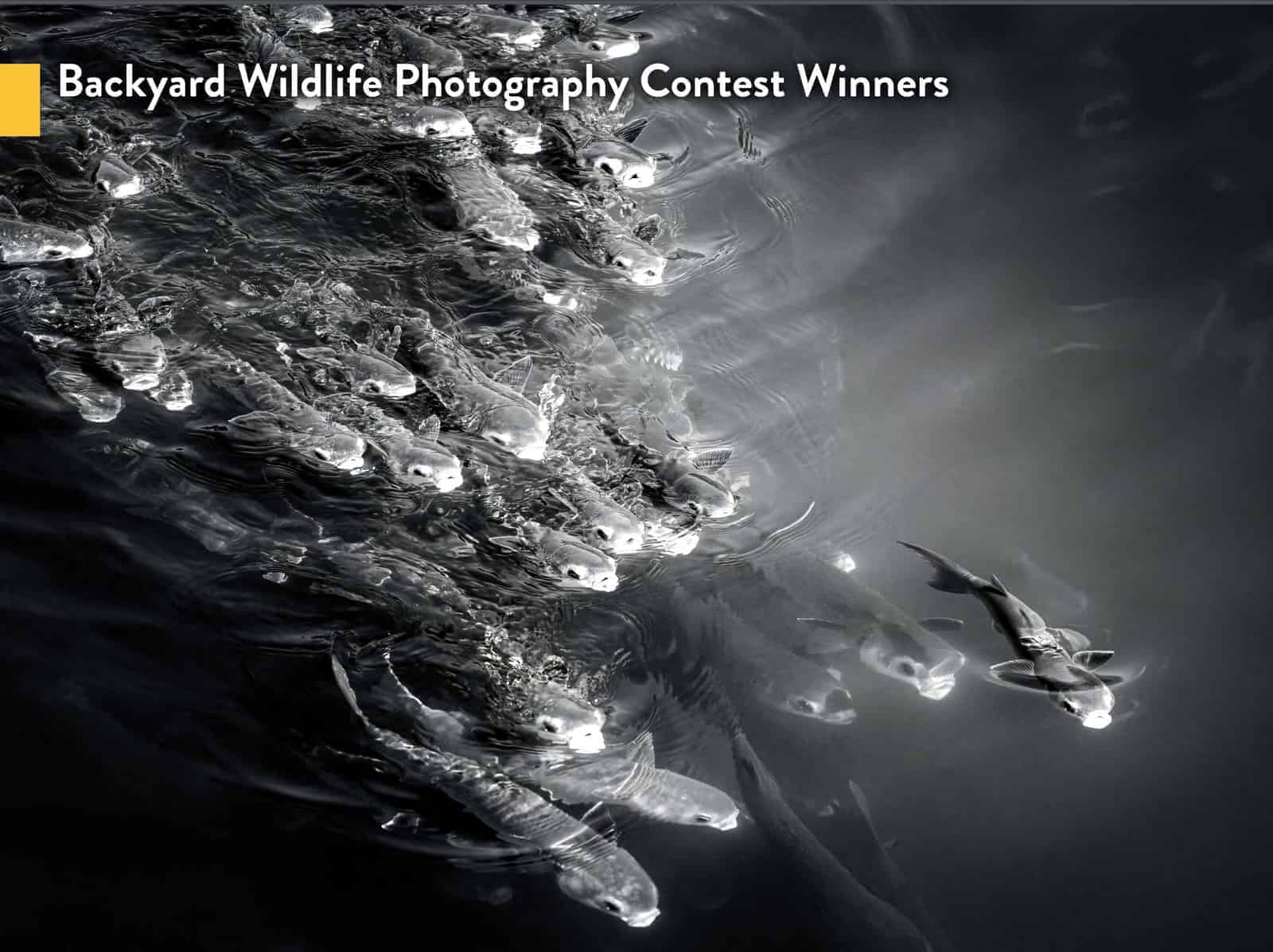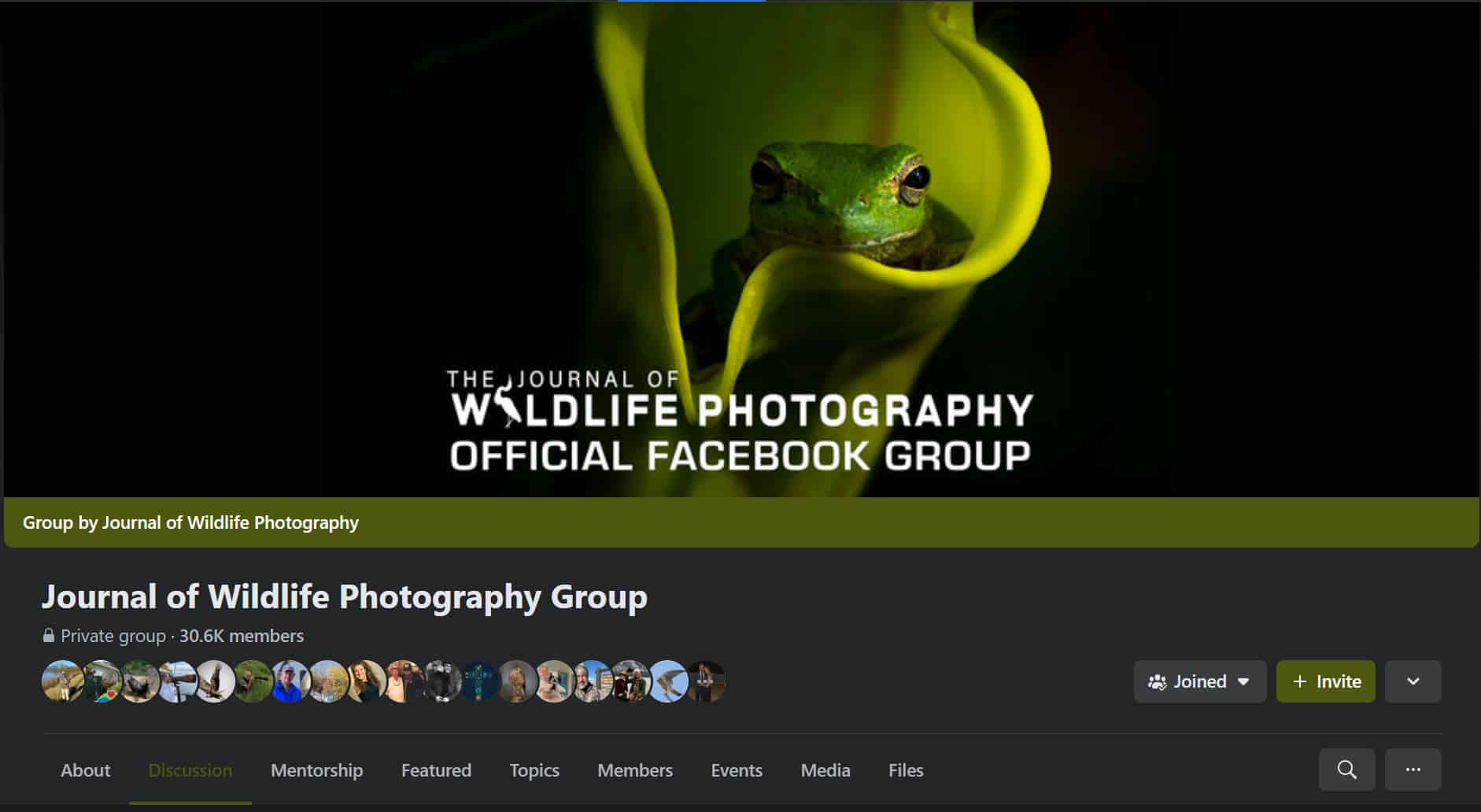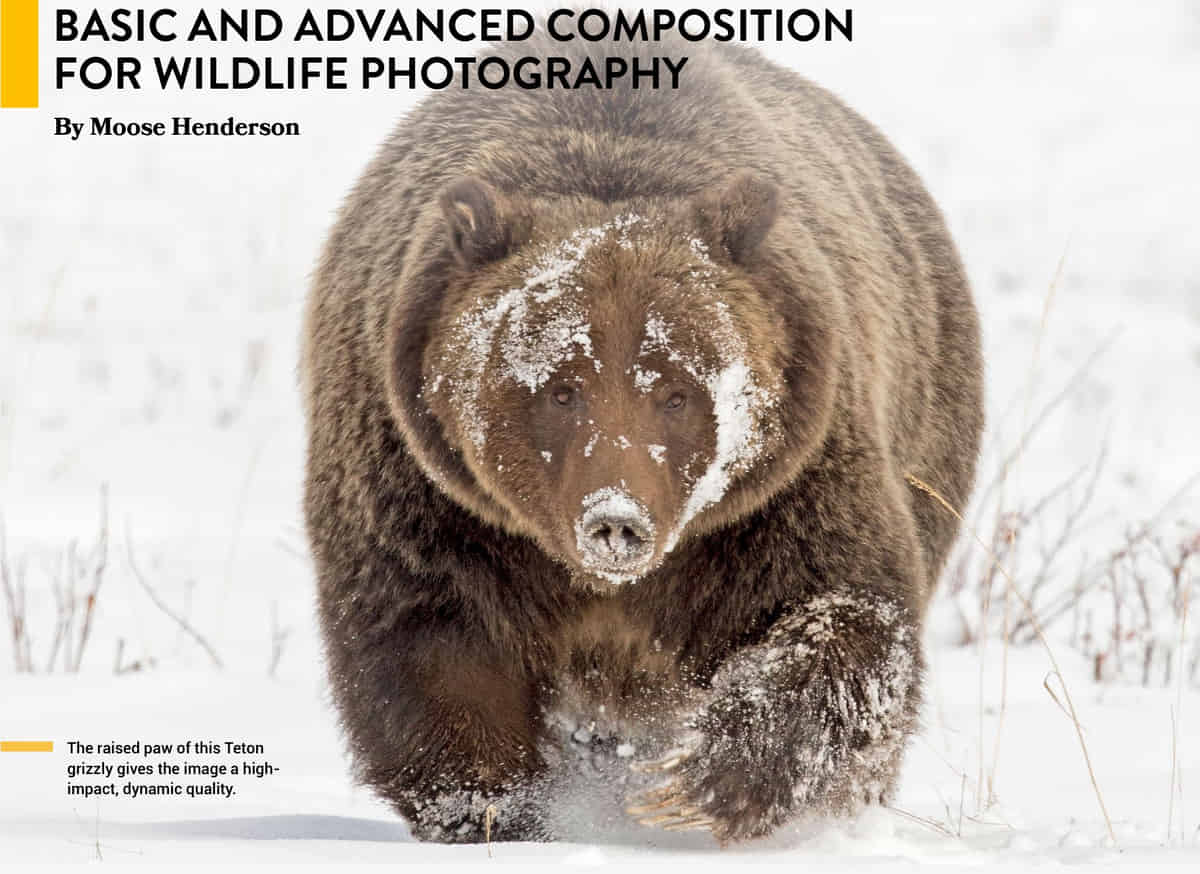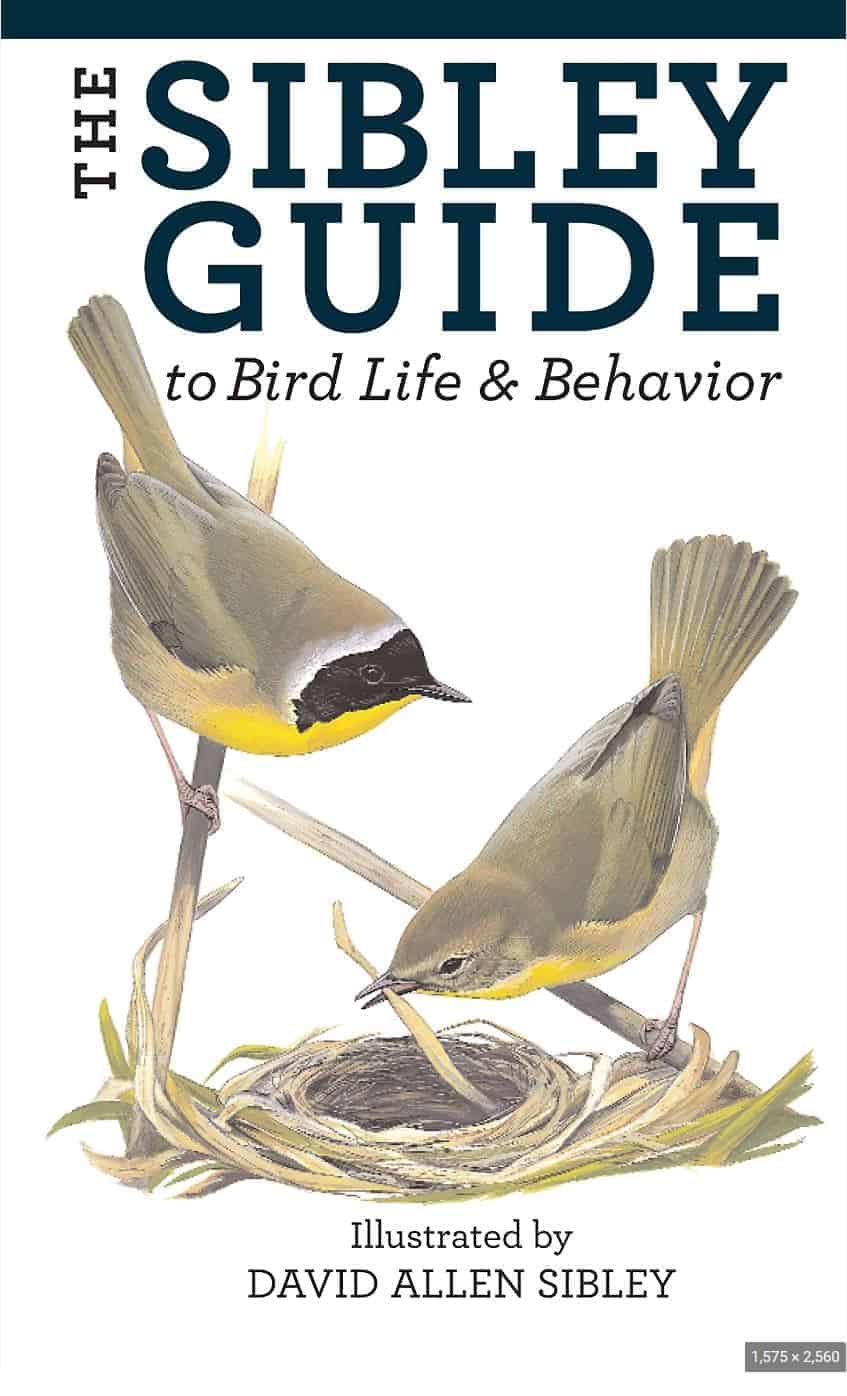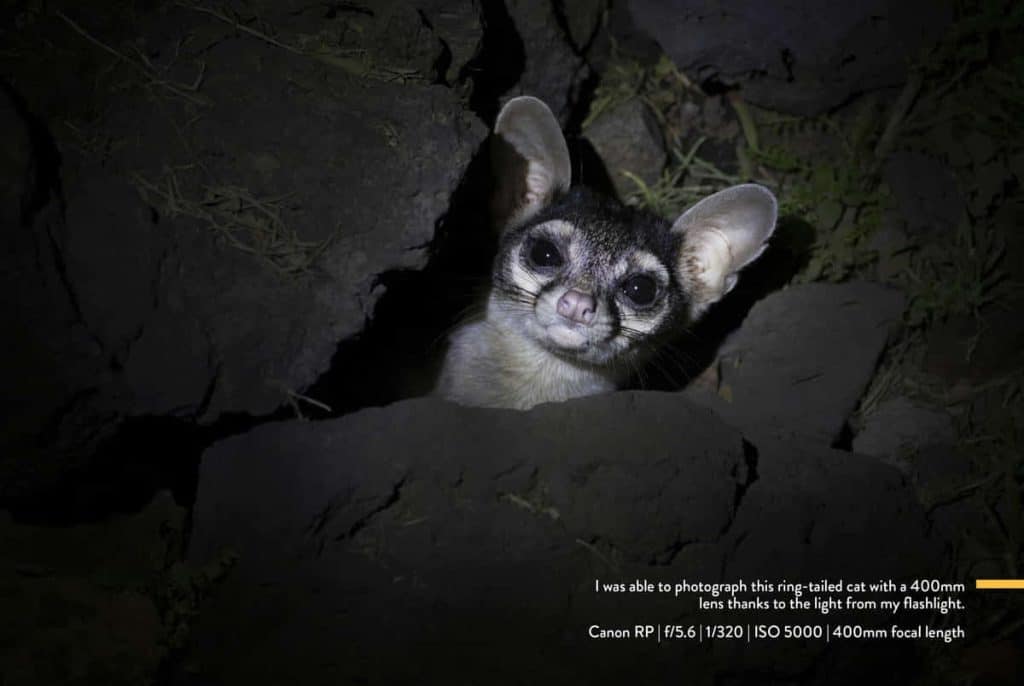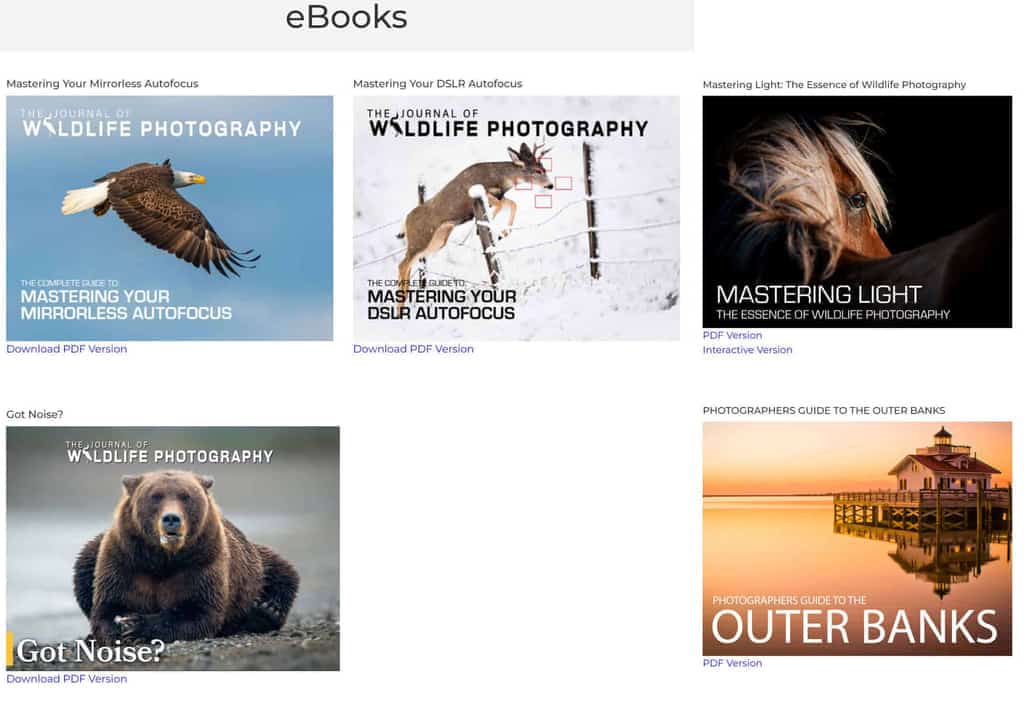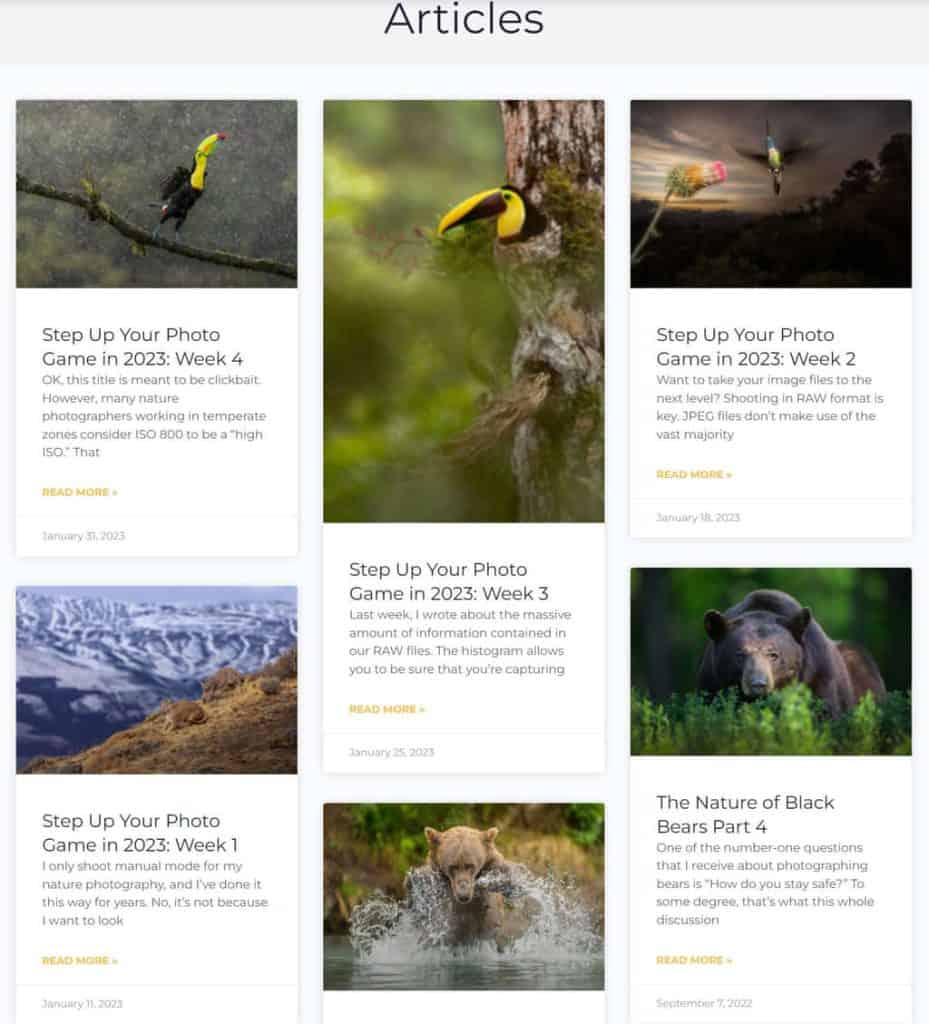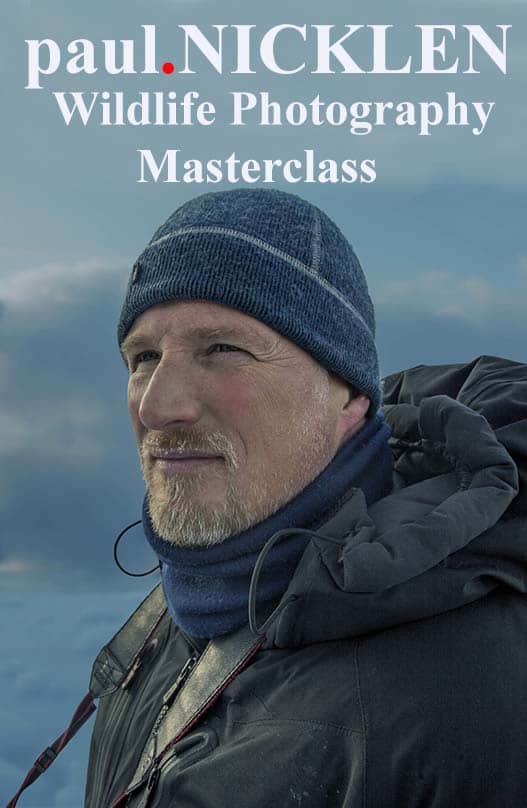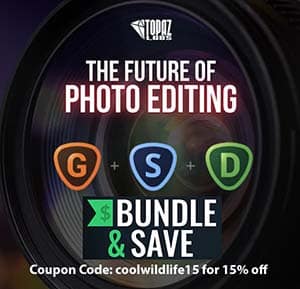The Best Way to Learn Wildlife Photography
The best way to learn wildlife photography is to learn by shadowing professional wildlife photographers and then practicing what they have taught you. Like any sport, that learning has to be correct or all you’re doing is forming bad habits that do not lead to successful outcomes.
Wildlife photography is no different. That’s why I recommend anyone who is learning wildlife photography to surround themselves with people who make their living photographing wildlife. In a perfect world, you’d be side by side with them in the field, taking their workshops and learning every aspect of wildlife photography from the masters.
Unfortunately, most of us do not have the financial means to take the approach I stated above. However, that does not mean you can not gain access to those same professionals and their insights virtually. This is where the value of the Journal of Wildlife Photography rises above the rest of what’s out there.
What Is The Journal of Wildlife Photography?
The Journal of Wildlife Photography is a community where wildlife photographers can share their knowledge and learn from an abundance of available educational resources created by professional wildlife photographers. This includes wildlife photography courses, eBooks, articles, photo contests, and a quarterly digital magazine that contains in-depth articles covering every aspect of wildlife photography. It is one of the best communities to be a member of for aspiring wildlife photographers wanting to learn how to produce powerful award-winning photographs.
I have been a subscriber to the Journal of Wildlife Photography’s digital magazine since 2019. During that time, I have learned so much from the professionals who contribute articles to the Journal based on their combined decades of experience in the field. The articles and eBooks are especially informative on topics such as mastering light and auto-focus systems as examples.
The 31,000 plus members in their Facebook community are constantly sharing images and are very engaging and helpful at answering any questions that arise. When I review my images from 2019 to now it’s obvious to me how my images have improved and that is partly due to the learning I have acquired from being a member of the Journal of Wildlife Photography.
The Journal has really helped me to gain an appreciation for the need to focus on storytelling. Whether that be for the purpose of portraying an animal’s behavior, habitat, or the need for conservation, these are variables that I am now thinking about as I plan my trips and approach a scene.
This truly is one of the best ways I have found to learn wildlife photography and improve the quality of my images. Best of all, the annual subscription is just $97.
FREE eBook
Anyone who subscribes to the Journal of Wildlife Photography from this post using one of the Subscribe Now links found in this review or by clicking on the banner below will receive a FREE copy of an 82-page eBook entitled, Mastering Light: The Essence of Wildlife Photography. You will be directed to a special page on the Journal’s website created for Coolwildlife readers and when you subscribe to the Journal the free eBook will automatically be added to your cart.
The Journal’s Quarterly Digital Magazine
The Journal of Wildlife Photography publishes a quarterly digital magazine with each issue offering 70 – 120 pages of expertly written content by professional wildlife photographers. Topics include every aspect of wildlife photography from shooting techniques, how and when to find different species, animal behavior, conservation, underwater, flash, macro, backyard photography and everything in between. Later in this post I have outlined what you can expect from the Journal along with a sample article to give you a glimpse into the quality of the content that appears in each issue.
The Journal has been around for six years so as an added bonus when you subscribe you gain access to all of the back issues. It’s a lot of reading, but every issue has a complete table of contents and keywords are searchable which makes it very easy to find articles that may be of particular interest. I’m calling the Journal’s magazine out as a must have resource for any aspiring wildlife photographer, if that’s you, read on.
A New Community Launching Q123
For the past six years the Journal of Wildlife Photography has been known for its quarterly online digital magazine. It’s a great publication, subscribers love it and it’s about to become so much more. In Q1 2023, the Journal is embarking on an exciting new development launching a full scale community for its members.
There will be monthly photo contests, talks with professional wildlife photographers, webinars, portfolio reviews, new courses, eBooks, a place for members to share their photography and so much more.
It’s a very ambitious undertaking so I interviewed the two owners of the Journal to get a sense of their plans for 2023. Both Jason and Kevin are clearly passionate and committed to turning the Journal of Wildlife Photography into a community platform where all levels of wildlife photographers can learn and collaborate with one another and with their stable of professional wildlife photographers. As Jason stated, “our audience has enjoyed a high quality magazine for six years but we always felt like there was so much more value we could offer them. We are taking the opportunity in 2023 to make that vision a reality.”
Kevin was kind enough to give me a sneak peak into the alpha draft of the community platform as shown in the screen shot below. Members will have one landing page where they can login to read the issues of the Journal as they always have. Only now they will be able to see all of the current events, activities, talks, photo contests, course offerings, etc. that are happening.
Members will even be able to build their own connections of people with similar interests from within the membership, like having a private group within the group to engage with one another. It’s all very cool and it’s already getting off the ground.
As I write this article the Journal has already launched the first monthly photo contest and a talk is scheduled for February, 23rd, 2023 at 8:00 pm EST with professional wildlife photographer Simon d’Entremont.
Simon is a professional wildlife photographer in Canada with decades of experience so this is an amazing opportunity to learn wildlife photography from one of the best in the field.
Talks like these will be happening every month, When you subscribe to the community you’ll receive regular emails regarding upcoming presentations and access to all of the recorded talks.

Meet Your Goals As a Wildlife Photographer?
For some of you, wildlife photography is a way to get out and enjoy nature. Others strive to improve with the goal of one day seeing their images hanging in a gallery or on the cover of National Geographic. The later is a lofty goal, learning wildlife photography and publishing award winning images does not happen overnight.
However, it is achievable if you go about it the right way. That brings us to answering the question, what is the best way to learn wildlife photography in the shortest amount of time?
20 Wildlife Photography Tips
- 1/ Know your subjects behavior
- 2/ Choose a Fast Shutter Speed
- 3/ Learn your cameras autofocus system
- 4/ Start in shutter priority mode
- 5/ Use the lowest ISO possible while maintaining shutter speed
- 6/ Use a long lens
- 7/ Use a tripod in low light
- 8/ Approach your subject slowly and silently
- 9/ Give thought to composition
- 10/ Eliminate distracting elements
- 11/ Learn to use your histogram
- 12/ Expose to the right (ETTR)
- 13/ Try manual mode with auto-ISO
- 14/ Develop your field craft skills
- 15/ Try to crop images as little as possible
- 16/ Shoot your subject at eye level
- 17/ Get creative with the light
- 18/ Always be ready and anticipate the action
- 19/ Keep both eyes open to observe what’s happening around you
- 20/ Try back button focus
I added this list of tips here to make a point. They are great tips but they are on everyone’s wildlife photography tip list. There’s nothing new here and even with a short description being added to explain the tip in more detail they will only get you so far.
If you want to learn wildlife photography I’m going to suggest that you not only observe the above tips but take it a step or three further. What I am about to share with you is the approach I have taken to elevate my game to the next level.
The Value of the Journal of Wildlife Photography
For those of you who do not have the resources to shadow professional wildlife photographers in the field there’s a great alternative that won’t break the bank. The articles in the quarterly Journal, along with the monthly talks, eBooks and courses provide you with the opportunity to learn from some of the world’s best wildlife photographers in a virtual environment.
You get to immerse yourself in their stories and go back stage to learn how an award-winning images are made. The Journal’s community provides you with so much more than just the typical 20 tips list you see everywhere else.

In most cases a great deal of thought, research and planning goes into capturing a great image. Aspects such as the location, time of year, time of day, direction of light and a deep understanding of animal or bird behaviors, special camera techniques right down to how to dress for extreme weather conditions.
All of those secrets are revealed in the issues of the Journal every quarter and through the additional resources that come your way from the professionals that have partnered with the Journal.
This is not the usual information that other publications and websites serve up. This uniqueness is what makes the Journal such a valuable resource. I spend a great deal of time studying the images in each issue of the Journal to determine what makes the image so powerful. what story is being told and what I can learn that be applied to my work.
I make notes from the Journal articles on things like animal and bird behaviors, best locations for photographing various species, time of year for different subject interactions, permits required, whether guides are available, and so on.
I use this same methodology employed by the professionals to do research on my own for a particular species when I am planning my own trips. When you get down to the bottom of this post I have provided you with a sample article that will demonstrate the thought process that goes into planning a shoot.
Aside from the contributions of the professional wildlife photographers there’s the power of the community. Many of the 31,000 Facebook members are brilliant photographers in their own right and are eager to engage in conversation and answer questions from those that are just beginning to learn the craft.
For those who want to go deep in their learning there is an abundance of additional resources available. More detail on those resources further down in this post.
Why Do Subscribers Love The Digital Magazine?
When asked, subscribers love many things about the Journal, but the one constant is the depth and breadth of the articles that are written by the professional wildlife photographers that contribute. There are so many variables that go into capturing award winning wildlife images, and the Journal articles peel back the onion to provide those insights that make us better photographers.
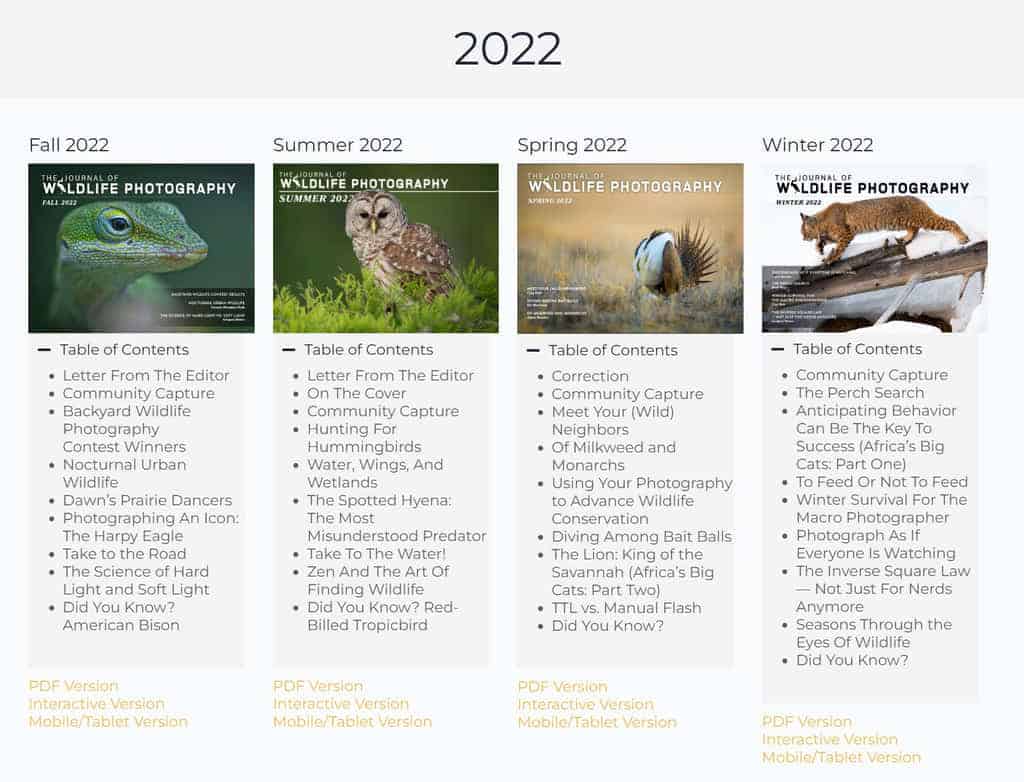
When you get to the bottom of this post I have included a sample article written by professional wildlife photographer Alyce Bender. This article was included in the Fall 2022 issue and it focuses on photographing the Lesser Prarie Chicken. I’ve included this article because it is an excellent representation of the quality of information presented in Journal. Articles like this one have helped me to create a checklist for the things I need to research and prepare before I head out on a shoot.
Below is a list of the other things that subscribers tell me they love about the Journal’s magazine. In some cases, I took direct snippets from much lengthier articles from Journal issues to demonstrate the point. This will help to give you a taste for the kind of information you’ll be receiving should you choose to subscribe to the Journal.
Stunning Wildlife Images
The writers that contribute articles to the Journal are professional wildlife photographers. Many have worked for National Geographic, the Smithsonian, BBC and the like. As such, you can expect to be thoroughly wowed by the quality of the wildlife images in each issue. I take the time to study each image with the intent to learn what made this image so impressive. Every image is sharp but what was it that set this image apart from the hundreds of other photo’s of the same species.
Was it the effective use of the available light, the angle, the background, the inclusion of the environment, the contrasting colors and so on. There’s so much to learn by just paying attention to the little things that set good images apart from award winning wall hangers.
Monthly Photo contests
The Journal will be hosting monthly photography contests for its subscribers. With over 14,000 subscribers there are hundreds of entries submitted and the competition can be stiff but what better way as you’re learning wildlife photography to see if your images measure up.
They usually have a beginner and advanced category to make it fair for photographers at all levels. The image below was the winner in the Backyard Wildlife Photography Contest from the beginner category. Each winning photographer won a $1,000 gift card to B&H Photo.
Facebook Community
The Journal of Wildlife Photography Facebook Group has become a substantial online community, with over 31,000 members at time of writing. Every day in this space, wildlife photographers share truly stunning photos from the field. In each issue, the Journal highlights images that caught the eye of the staff.
The photographers’ stories on how they captured and created their photos, plus a few other noteworthy images from those photographers’ portfolios are included.
Composition Tips
In this article by Moose Peterson he covers basic and advanced composition for wildlife photography. As you continue to learn wildlife photography from those you are following, you will quickly realize that composition is one of most important ingredients in producing powerful images that engage your audience.
I’m going to jump you ahead to a snippet from the advanced section of this article which gets the reader well beyond the rule of thirds and other basic elements of composition.
The five techniques include Virtual Feet, Anthropomorphism, Movement, Impact, and Color Combinations. Virtual Feet Often when we photograph wildlife, obstructions like brush and water hide our subject animal’s legs and feet. However, even when they are not shown, it’s important to provide enough space in the image for virtual legs and feet. We should not amputate our critters just because their appendages are hidden.
Anthropomorphism As a scientist, I learned to never anthropomorphize animals, or attribute human qualities to them. However, as wildlife photographers, when we emphasize human qualities of our subjects, we humanize them and provide visual interest. Viewers love to see themselves or loved ones in images, and humanizing animals in your work provides that direct connection. The piercing gaze of a great gray owl connects the animal with the viewer.
Movement Many times, wildlife can appear very static when photographed in a field or on a perch. Providing a sense of action or movement will provide increased interest. Birds singing on a stick, flapping their wings as they bathe, or flying through the air are more dynamic and interesting than birds sitting still. Likewise, a running or walking animal with a raised paw is more interesting than a static animal. I generally prefer the far front paw slightly raised, which implies movement forward. If you can capture water or snow falling from the raised paw, that gives an added bonus. And the article continues…..
DIY Hacks
Finding ways to make photographs you envision often requires resourcefulness and creativity. I have sat in a cattle feed tub placed in shallow water to get a photo that I couldn’t get from any other angle. I don’t mind getting wet, so I have waded and photographed with the lens mere centimeters above the water. On one occasion, the tip of my lens shade dipped into the water, and that cured me from wanting to wade and shoot without some kind of support system. Too many things can go wrong!
That incident led me to rig my first float-tube blind for an in-water photo project in 2001. The basic design of my various float tubes includes a tractor-trailer truck tire tube, a piece of plywood to fit across half of the top of the tube, a thin piece of PVC pipe to form an arch over the plywood, parts to secure the pipe to the plywood, rope to tie the plywood to the tube, camouflage fabric to cover the blind, and a rope tether or leash. You may wish to create something similar if you also want to photograph directly on the water.
Valuable Reference Tips
Some of these books are basic reference guides, such as Mark Elbroch’s Mammal Tracks & Sign, both the first and second edition because the two are completely different. Or, The New Neotropical Companion by John Kricher.
Others are more in-depth reference guides to behavior, like the Sibley Guide to Bird Life & Behavior or the Behavior of North American Mammals. Many books are a bit more academic in scope, such as Ecology and Management of North American Moose or Behavioral Ecology of Tropical Birds.
Technical Advice
Tamara Blazquez Haik achieved the photo of a ring-tailed cat (Bassariscus astutus) that visited her yard during the pandemic by first observing the animal’s behavior and learning about its habits. She noticed that it came to her yard around 8:30 p.m., sometimes 9 p.m., but never earlier or later than that.
After a few months of observation, studying, and mapping its route, she decided to set up her gear on the stone fence that this raccoon relative liked to walk on. First, she set her camera with a motion sensor attached to it so that the shutter would be activated when the animal walked by the camera. She used her 18-135mm lens at 18mm, setting the focus mode to manual and focusing toward infinity, allowing for a deep depth of field, which would make it easier for her subject to appear sharp in the shot, no matter where it stood.
Species Behavior
Jason Kazuta says in my experience photographing hummingbird nests (your experience with other hummingbird species may vary), I have never seen one build a nest close to a feeder. Too much traffic. While there is the odd exception, they are almost always more than 15 meters away, usually much more, like 30 meters. My hummingbirds will usually make their nests on branches close to the trunk of a tree, or on a forked branch with a slightly downward angle. They love holly trees, cedar boughs, and rhododendrons. When a female is approaching her nest, she will emit a series of chirping sounds and approach the nest in an indirect, zigzag pattern.
When you hear her, follow her in with your eyes; do not physically follow her, as you may scare her off. She will usually stop chirping when she lands in the nest, so if you hear her stop chirping but lose sight of her, it’s possible there is a nest somewhere close by. Look carefully — hummingbirds are very difficult to spot if you’re inexperienced, and you don’t want to spook her! If you cannot find her, be patient and wait. She will chirp again as she takes off from the nest, so you will have another chance as long as you stay still and quiet.
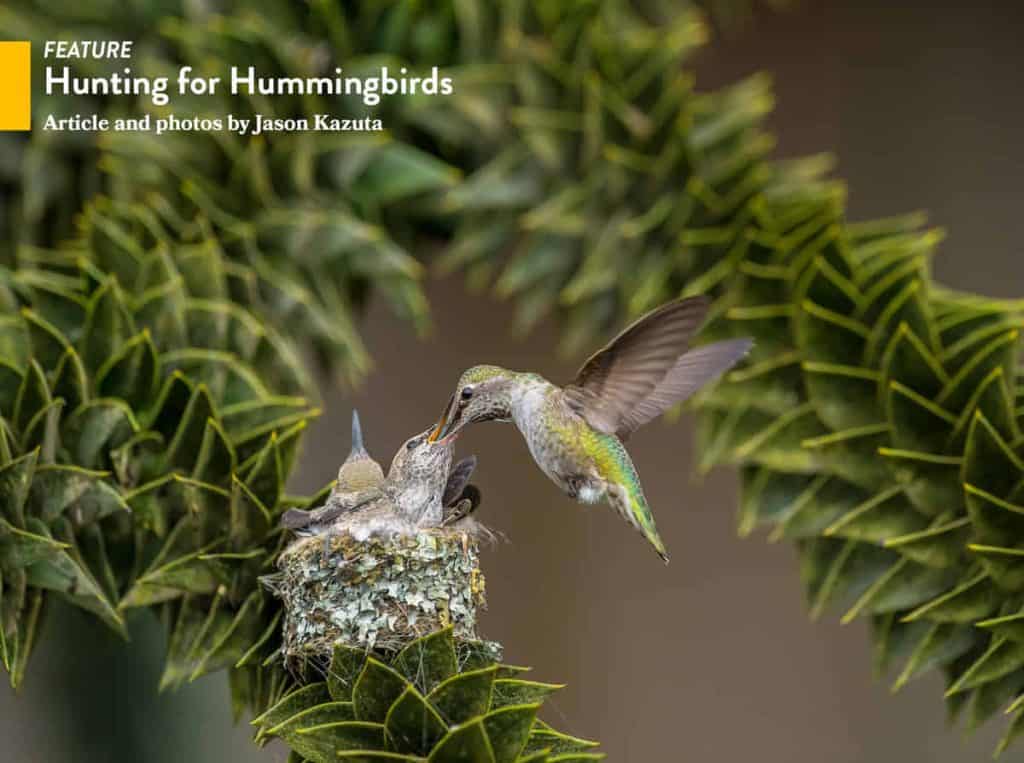
Conservation
Although revered for centuries in East Asian cultures, the red-crowned crane was thought to be extinct in Japan by the beginning of the 20th century, mostly due to hunting and the feather trade. Fortuitously, a handful of individuals were found in the Kushiro wetlands of Hokkaido in the 1920s. By the 1940s, the Japanese government had issued regulations protecting the species, and to this day, the red-crowned crane is protected and considered a national treasure of the country.
Protection for the Japanese population has been critical to stabilizing the wild populations of these birds. When the local residents, conservation organizations, and government worked together to protect not only the animal itself but also the wetlands it depends on for much of its life cycle, the species was slowly able to begin its recovery. By the 1980s, the population in Japan had exceeded 400 individuals for the first time in a century. And in 2008, Japan’s main island of Honshu had its first sighting of a red-crowned crane for the f irst time in more than a hundred years.
Unfortunately, the land that has been designated as nationally protected areas for the cranes to breed and feed in has now become saturated with the increased population of birds over time. At this point, unless more wetlands and marshes are allowed to re-wild from the agricultural development they have disappeared under, many worry the Japanese population of red-crowned cranes could stagnate well below the healthy population numbers needed to graduate this bird off the endangered species list. Crowding at winter feeding stations increases the threat of disease as well.
On mainland Asia, the population is still decreasing. The sub-population that utilizes the western flyway between Russia, China, and the Korean Peninsula has seen a sharp decline in wintering populations over the past decade or so, from more than 1,100 birds to about 500. Fortunately, current efforts are in the works to increase protection laws, implement wetland conservation plans, and secure wintering grounds for the birds throughout their migratory range. These efforts hinge on international cooperation within the region, and luckily, there is joint interest in preserving this culturally significant species.

eBooks
Subscribers have access to in depth eBooks that are not available to the general public. Many of these eBooks have been written on topics that are of particular interest and have been requested by the readers.
Training Video’s
This is one of the added benefits of being a subscriber of the Journal. Professional wildlife photographers with an expertise in areas such as post-processing have been hired to produce training video’s.
Additional Articles
In addition to the quarterly digital magazine there are additional articles coming out weekly that cover a variety of wildlife photography related topics from shooting techniques, post-processing, animal behavior and everything in between.
Weekly Touch Points
Subscribers receive weekly newsletters that let them know about upcoming events, contests and additional resources that have been made available.
Member Dashboard
Members have access to a well thought out dashboard. Well this may sound like a given, with so many resource materials available, you’ll appreciate the ease at which you can navigate the site to find what you’re looking for.
Mobile/Tablet/Interative Versions
Every issue of the Journal of Wildlife Photography comes with a pdf version which is perfect when reading the issue from your desktop computer. At the request of the membership, a mobile, tablet and interactive version have been added to each issue, including every back issue. With a full table of contents listed under every issue, finding and jumping to articles of interest is super easy.
Some readers have commented that they have difficulty finding the time to sit down and read all of the content every quarter. The staff at the Journal listened and have an audible version of the Journal issues in their future roadmap so that readers can listen to the content at their convenience. What a great way to turn a traffic congested drive to work into an informative and entertaining part of your day that you can look forward to.

Conclusion
If you have a passion for wildlife photography and a desire to keep improving there’s no better place to learn. The professionals and amateurs who make up the membership in the Journal’s community are eager to share their expertise to help everyone grow.
For many it’s the fun of being with like-minded folks, a place to share images and comment on the work of others. If you’re ever stuck with a question you don’t know the answer to you it’s nice to know you have access to tens of thousands of wildlife photographers and one of them is sure to have the answer.
If you’re really serious about becoming a professional wildlife photographer and making a living at it you’ll want to read my post called “How to Become a Wildlife Photographer”. I dive deeper into the facets of wildlife photography that you need to consider if you’re going to make a business of it.



